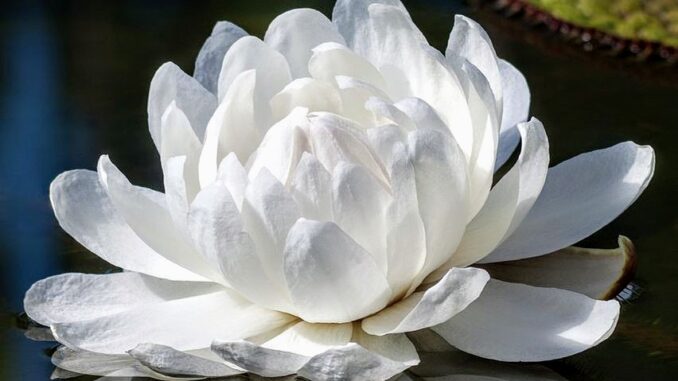
Nearly two centuries ago, the newly-formed Geographical Society of London (now known as the Royal Geographical Society) extended a request to explorer Sir Robert Hermann Schomburgk. The learned gentlemen and scholars wished him to organize an expedition to British Guiana (now Guyana). During his time in the South American British colony (1835 – 1839), Schomburgk made many new finds and observations. However, the discovery he’s most famous for is Victoria Amazonica, originally named Victoria Regia in honor of England’s newly crowned queen. The man who gave the species the name Victoria Regia was Sir Joseph Paxton, the first in England to cultivate the species and present a bloom to Queen Victoria. Paxton, an architect, was inspired by the structure of the lilly pad to design the Crystal Palace. The world-famous structure of glass and cast iron was built for the 1851 Great Exhibition in Hyde Park, and stood until 1936 when it was taken by fire.
V. Amazonica, also sometimes referred to as the giant Amazon water lilly, has the largest leaf of any plant. Widely found in the backwaters of the Amazon River basin in Brazil, the lilly pad/leaf can be as much as three meters (~10 feet) across, with an underwater stem 7 – 8 meters (~23 – 26 feet) long. These popular plants can also be found in botanical gardens all over the world. It’s so big, it’s capable of remaining afloat even with the weight of several children sitting on it. Each plant has one flower at a time, but many flowers over the course of the growing season. Each bud is white when it first blooms, but turns reddish pink during pollination. A species of scarab beetle co-evolved with the plant. When the white flower blooms, it emits a fruity aroma, attracting the beetle, which crawls inside and feasts. The flower closes around the beetle, trapping it for a full day while the petals change color to reddish pink. Opening up to release the beetle, the fruity aroma of the bud is gone, and the insect, loaded with pollen, moves on to another white lilly, resulting in cross-pollination. The change in color and aroma tell the beetle that a flower has already been ‘raided’ and is no longer desirable to the bug. In this way, each flower in a patch of lillies is pollinated, and beetles don’t waste time on flowers that have already been visited.
“Giants of Nature: The Biggest Plants in the World | Free Documentary Shorts” (four minutes, cued to start at 8:24)
Scientific Classification
Kingdom: Plantae
Clade: Tracheophytes
Clade: Angiosperms
Order: Nymphaeales
Family: Nymphaeaceae
Genus: Victoria
Species: V. amazonica
Binomial name: Victoria amazonica
